Star Born
New ISIS Video Stars British Hostage http://t.co/SH0SFIlLXi
— New York Times World (@nytimesworld) September 18, 2014
A New York Superlative
The mean income of the top 5 percent of households in Manhattan soared 9 percent in 2013 over 2012, giving Manhattan the biggest dollar income gap of any county in the country, according to data from the Census Bureau The top 5 percent of households earned $864,394, or 88 times as much as the poorest 20 percent, according to the Census Bureau’s American Community Survey, which is being released Thursday and covers the final year of the Bloomberg administration.
The meaning of this statistic, which still maintains a limited ability to shock in our post-Piketty era, will magically unravel itself in due time as many of the remaining the poor find themselves simply pushed off the island — by rising rents, by new condos, by eminent domain — and the upper bounds of wealth begin to resemble the needle-thin skyscrapers being constructed to contain so much that wealth: an asymptote reaching toward infinity.
Trailer Misleading
“The Islamic State was already well known for its sophisticated filmmaking, and many of the scenes depicted in the video appear to be a ‘gamification’ of previous Islamic State propaganda footage, including their hour-long “Clanging of the Swords” film released earlier this year. Though the new video appears to constitute a trailer, there’s no indication yet that a real, playable game is in the offing anytime soon.”
New York City, September 16, 2014
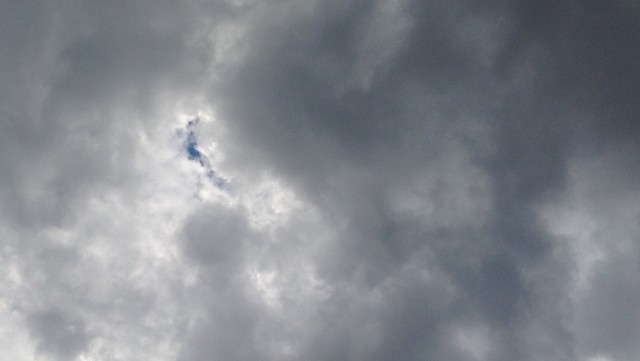
★★ A flake of gold reflected briefly from somewhere, in the gray morning. Then rain took over, dutifully, on schedule. The expected end came and the clouds lifted in the west. The showers, successfully outwaited, had left sheets of water on the pavement, and the east was still gray. A rich blue opening appeared in the clouds above the stairs into the subway, and the subway stairs downtown ascended into sunlight. Pebbles in the wet sidewalk concrete glittered. But an hour or two later, dirty clouds had still not surrendered the north, even as the full sun grew warm and edged toward being hot. Another hour, and gloom had overtaken everything again. The simple changeover had become something uneasy; gray on gray brooded over Grand Street. But at last, uptown, the clouds were separating again — recalcitrant no more, but an obliging showcase for the molten colors of the lowering sun.
�"löf Arnalds, "Half Steady"
From the forthcoming Palme, a characteristically weird (and friendly!) track, freshly unpacked, from Iceland.
Facebook Reveals the Future of All Media
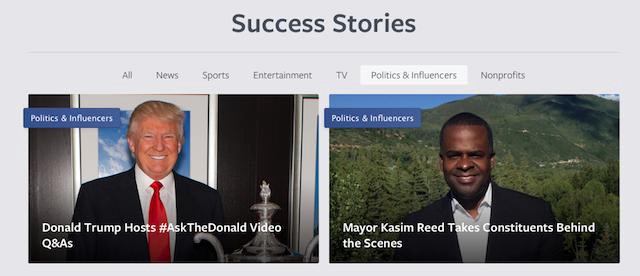
Facebook! People use it a lot; therefore, publishers want to be a part of it. Everyone wants to know: How can our publication succeed in this strange new media landscape? How can we get Facebook users to come to our site, instead of all the other sites? Today, in a post called “How to Drive Referrals to your Digital Properties” — wait, no, it’s just called “Drive Referrals to your Digital Properties” — Facebook posted some advice:
First, the basics:
1. Post frequently
2. Share links, photos, and a variety of content
Then, go native. Be social!
3. Upload videos to Facebook with a call to action
4. Create content with social context in mind
5. Tag other pages in your Facebook posts
6. Host a Q&A;
Finally, for advanced users:
7. Build around your stars — whether TV talent or writers or public figures
8. Use Trending to find popular topics on Facebook and post about them
9. Embed Facebook or Instagram posts in your website
Followed by the obligatory hard sell:
10. Add the Like and Share buttons to your website and mobile apps
11. Add Open Graph and App Links tags
12. Add Facebook Comments to your website
As recommendations, these are fairly broad. Use Facebook more. Think like a Facebook user! Publishers know this stuff already (or at least employ a few people who do). But what does this look like in action? What kind of stories does Facebook link to, as examples, in this instructional guide?
Here’s one: Next to “Post frequently” is this Bleacher Report story called “Mesut Ozil Used His World Cup Money to Pay for 23 Surgeries for Brazilian Kids.” It is comprised mostly of an embedded Facebook post, in which Mesut Özil explains that he is using his World Cup money to pay for 23 surgeries for Brazilian kids.
Mesut Özil’s original Facebook update was shared twice as many times as Bleacher Report’s version, which, to its credit, did link to a story debunking a false report about Özil, which had previously gone viral, of course, on Facebook:
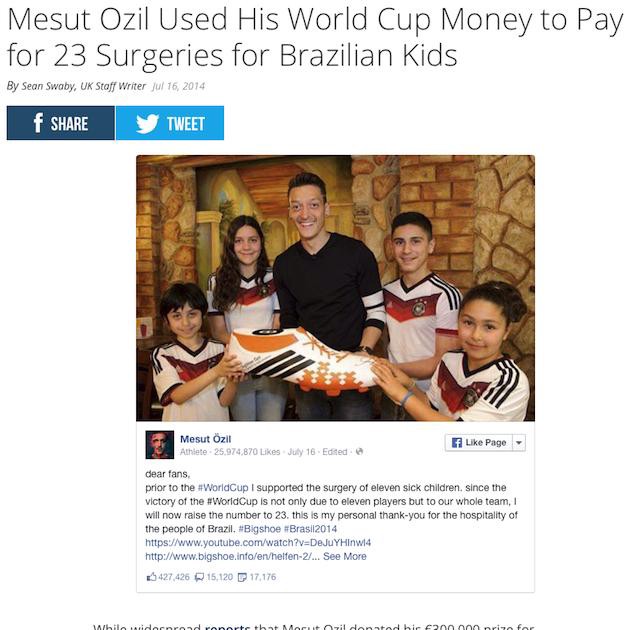
So, there! It’s clear: Use Facebook to create content which you can then share with Facebook. Now enjoy a few “Success Stories” to distract you from the gathering realization that all your most cynical assumptions about how the ravaged viral internet are turning out to be correct.
An Investigation into the Weirdest Ronald Reagan Photo You've Probably Never Seen
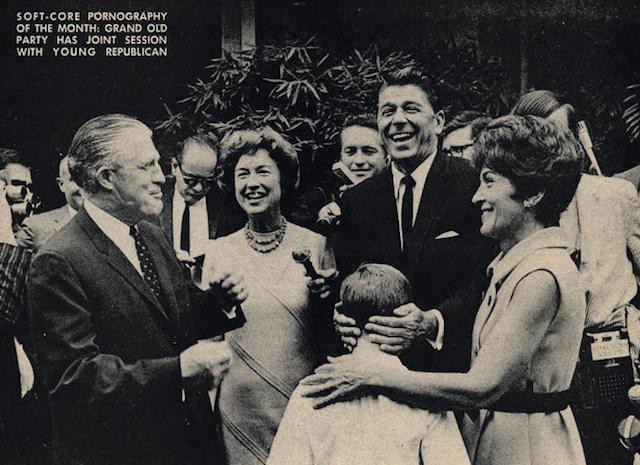
I read and re-read many books in my adolescence. The Wanderers, for the sex; The White Hotel, also for the sex; and To Kill A Mockingbird, for the lyricism. Well-thumbed, too, was an anthology of essays, reported stories, interviews and cartoons from The Realist, a funny, scathing counter-culture magazine founded in 1958, by Paul Krassner. I didn’t understand a lot of it; the “impolite” interview with Dick Gregory; the parody of William Manchester’s biography on the John F. Kennedy assassination, in which LBJ has his way with Kennedy’s corpse; the famously dirty Disney cartoon — but I knew, even in my ignorance, that it was funny.
Among the book’s treasures was a rather crude photo, published in Issue No. 76, August 1967, of Ronald Reagan — flanked on his right by George and Lenore Romney, on his left by his wife, Nancy — smiling like a jack o’ lantern. Standing in front of Mr. Reagan is a little boy. Due to the angle of shot, the former appears to be receiving a blowjob from the latter.
The caption: “SOFT-CORE PORNOGRAPHY OF THE MONTH: GRAND OLD PARTY HAS JOINT SESSION WITH YOUNG REPUBLICAN.”
For reason divorced from politics — I had no idea who Reagan was, other than that my parents had not voted for him — this struck adolescent me as pretty funny. And now, two decades later, it still does. But I’m also intrigued by it; I like trifling historical mysteries, and this obscure, bizarre photo of a famous man — this image utterly devoid of context — fits the bill.
Who shot it? Where? What were the circumstances of the occasion? And who is the boy?
1.
I talked to Krassner first. I’d been looking for an excuse to interview him; how many people do you know that rode the bus with the Merry Pranksters, edited Lenny Bruce, and claims to have coined the term soft-core pornography?
“It was a natural,” he said. “It was like a gift.” Even after nearly five decades, Krassner was evidently tickled by the photo. It had appeared elsewhere, he said, either in a magazine or newspaper. He couldn’t narrow it down. Nor had he gotten permission to print it from the photographer, whose name he didn’t know. But he was certain it was the real McCoy: “It’s not Photoshopped,” he said. (That would have been miraculous, since Photoshop was not created by the Knoll brothers until the late eighties.)
Toward the end of our chat, we wondered who that poor kid might be. I said it would be ideal if he turned out to be Mitt Romney. “Oh, that’s just wishful thinking,” said Krassner, who noted that Romney would’ve been far too old — around twenty — in 1967. But, he said, “it would be symbolic.”
2.
Next, I emailed Rick Perlstein, whose latest book, Invisible Bridge, is about the ascent of Reagan. Perlstein is a voracious consumer of information, so I figured if anyone would be familiar with the photo, he’d be a good bet.
“Hah!” he replied. “I’ve never seen it.”
3.
Surely, though, Lou Cannon would have. He was the Washington Post’s White House correspondent during the Reagan years and has written several books about the man.
I called him. He was pretty busy, he said, but agreed to look at the photo.
“It’s not pornographic, is it?” he said.
I assured him it was not. He never replied to my email. We may have different definitions of pornography.
4.
Continuing my Reagan biographer stations of the cross, I called Craig Shirley, author of two Reagan books.
He, too, was unfamiliar with the photo. But, in an email, he theorized about the circumstances. “Reagan had nothing against Romney but Romney could not stand Reagan,” he wrote, “so it had to be some sort of formal meeting.”
In 1967, Romney and Reagan were considered top prospects for the Republican nomination. They both hoped to take advantage of Richard Nixon, who was believed to be a poor candidate. Shirley guessed it was either an event for the Republican Governors Association, which Reagan chaired from 1968 to 1969, or the National Governors Association. He suggested I contact Thomas Reed, who worked on Reagan’s 1966 campaign for governor (and was, years later, Secretary of the Air Force under Presidents Ford and Carter), and Peter Hannaford, who joined Reagan’s staff as an administrative aide in the early seventies.
5.
Alas, Secretary Reed couldn’t identify anyone else in the photo. But he had an idea about the men in the background — one over Romney’s left shoulder, another over Reagan’s right. “I strongly suspect they are all newsies,” he wrote. This makes sense; you can see various reporter equipment, and a camera on the viewer’s left.
George Skelton, a long-time Los Angeles Times staffer who covered Reagan, agrees. “A guy in the background may have been a Sacramento AP reporter, long since retired,” he emailed.
As for Reagan’s former aide Peter Hannaford: “I don’t think I can be of much help,” he apologized. However:
…The boy is likely to be young Ron (Ronald Prescott Reagan) who would have been 7 at that time.
If the year was 1967, then Ron Reagan, Jr. would have been nine.
Neither Shirley nor Reed found it terribly likely that young Reagan would’ve attended a Governors Conference event. “I don’t think it is Skipper,” wrote Shirley. Skipper was Ron Jr.’s nickname. “His hair was usually cut shorter and plus this hair looks lighter than Skipper’s was. Also, from the back, Skipper bears a very striking resemblance to his father and I see no Reagan here in this photo.”
“The boy does not look like Ron Jr, and Nancy NEVER would have taken Ron Jr. to a political event with ‘outsiders,’” wrote Reed.
6.
At the very least, I thought we could figure out with some degree of certainty where the Romneys and the Reagans crossed paths. Given the mutual dislike, I took it for granted that a Governors Conference was the most likely setting. Edwin Meese, who joined Reagan’s staff in 1967 and eventually became the United States Attorney General, is in this is camp, too. “I am not sure about the photo, since I don’t remember being there when it was taken, but my guess it was at a governors’ conference, since both of the men were governors together during that year,” Meese emailed. He was unsure of the date.
Reed, more certain than Meese, said the photo was taken at the end of June 1967, possibly at Yellowstone or Jackson Hole. Maybe so: Steve Branch, the Audiovisual Archivist of the Reagan Presidential Library, told me the Reagans and Romneys were at a Western Governors Conference in Yellowstone on June 27th of 1967.
7.
It was a three-day conference. Governor Reagan was a hot ticket; Governor Romney was not. Here’s the New York Times published on that day:
“If the Republican party comes beating at my door, I wouldn’t say ‘get lost fellows,’ but that isn’t going to happen,” Governor Reagan said in an interview with Idaho newspapermen before leaving for Sacramento to deal with budget and tax problems in the Legislature.
The other Governors here for the Western Governors Conference spend much of their time answering questions about Mr. Reagan. Gov. Tom McCall, a Republican moderate from Oregon, called the Californian “the hottest piece of political property the Republican party has going…..”
There is little show of strength for Gov. George Romney of Michigan, the leading moderate candidate.
Among the topics under discussion at the conference: the water problems faced by the western states. This was an issue, Reagan told his colleagues, that ought to be handled by the states, not the federal government.
8.
Early in my investigation, I’d contacted Steve Branch, the Reagan Library archivist, and sent him the photo. “Interesting caption!” he replied.
I looked with no luck of finding this photo in our collection. I could not even locate any of George Romney. However, I am almost 99 percent sure that is Ron Reagan as a child in front of Governor Reagan.
Branch also disputed Reed’s contention that the Reagans wouldn’t have taken their son to ‘outsider’ event. He said there were plenty of photos to the contrary. To be certain, I called Ron Prescott “Skipper” Reagan. Even if he didn’t recall the event, perhaps he’d recognize his own haircut? I left a message at his home and received no reply.
9.
The only mystery left, then, is the identity of the man or woman who snapped this marvelous photo. I don’t expect to solve it. Sadly, no one has claimed credit. And there’s not much to go on. A review of contemporaneous press coverage doesn’t yield any other photos of the occasion. Reverse image searching reveals nothing. And, while I’d happily call every photographer who attended the Governors Conference, a guest list doesn’t seem to exist.
With any luck, our mystery shutterbug will step forward.

An update: It appears we were all wrong! Awl reader/supersleuth Doc has found footage of the event, which purports to be at the Reagan home in Pacific Palisades, Los Angeles, on September 25, 1967. I sent the footage to Steve Branch, who replied that the footage was taken at the same time as the photo and:
That is definitely the Reagan House in Pacific Palisades, CA. Great find on the video! The only people I can ID are of course Ron Reagan (the child), Press secretary Lyn Nofziger (bald man) who is behind Reagan as he is walking out of the house and Arthur Van Court (Reagan’s security) who is behind (to our left) when Reagan is speaking at the end.
Elon Green is a freelance writer.
A Portrait of the Alt-Bro as a Young Dumbass
by Gavin Tomson
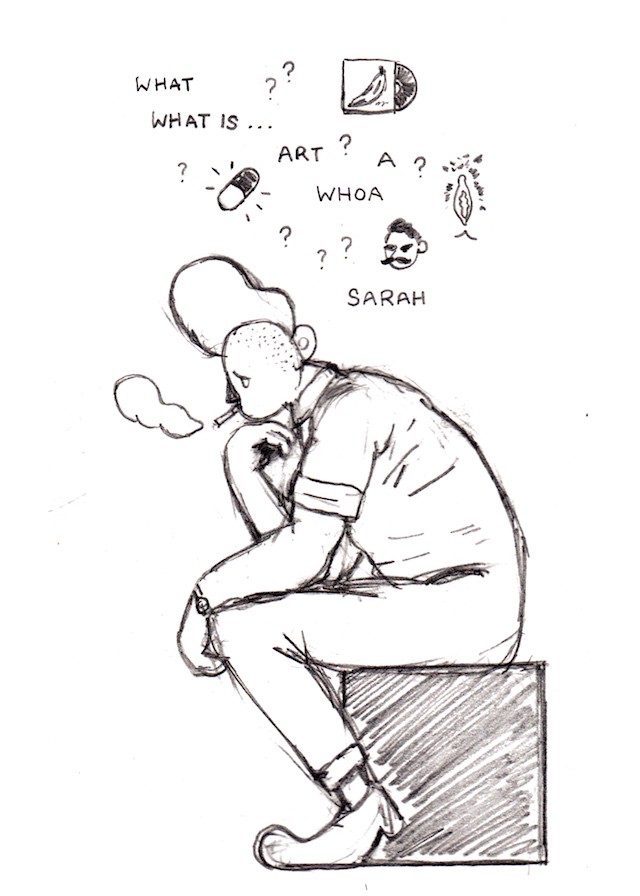
It’s 11AM on the 4th day of Spring Break. He’s reading Steppenwolf at a minimal loft cafe that sells tote bags and leather notebooks and beard lube. He’s drinking a $4 Americano and debating whether he should step outside to roll a cigarette. Earlier today, when he arrived at the café, which by the way is called “Brooklyn,” he thought to himself, One ought only to smoke on weekends. Yet Spring Break is currently revealing-itself-to-him-as-weekend, so he goes outside to smoke. As he observes, flâneuristically, the soft light play upon the Portuguese Church steeples across him, he feels he’s on the verge of a profound realization, a Joycean epiphany, something that will blow his mind. Google, is he manic-depressive? Sometimes he feels so much, it’s almost unbearable. There’s no way most people feel as much as he does. He’s unique. He might be a genius. He’s certainly heterosexual. He’s probably going to grad school.
He is the Alternative-Bro.
Dumpster diving though his rent is paid for him, arranging gatherings between radicals less privileged than he, calling everything “dialectical,” listening to chillwave, perpetually nodding, feeling “depressed”: this is what the Alt-Bro lives for. This is what intoxicates him “in a particularly Dionysian way.”
The Alt-Bro is now thinking, as he observes an elderly woman enter the Portuguese church, Religion has done a lot of terrible things, obviously, but it has done a lot of good things, also, and this is something most people don’t understand. The Alt-Bro wishes most people thought about things as much as he does. He’s neither elitist nor classist, but he doesn’t trust people who don’t “fundamentally feel ideas.” He says things like, “But then you start to think in iambic pentameter and it’s fucked.” The Alt-Bro takes himself seriously.
The Alt-Bro has a gift for looking like he’s thinking. His desktop background is of Swedish architecture. The Alt-Bro is in “an open relationship” with a girl who doesn’t call it an “open relationship.” He claims to be attracted to “both men and women,” though he finds “something special” about women. He doesn’t know what it is. It is a mystery.
The Alt-Bro is “passed” binary thinking. He’s interested in Buddhism, though only intellectually. He’s “really getting into non-duality these days.”
The Alt-Bro is always really getting into something. He cares about ideas so much! The Alt-Bro has witnessed too many of his intellectual peers succumb to caring about lesser things such as gender and postcolonialism. The group of self-identified queers who run his university’s left-wing newspaper and volunteer at community kitchens and publish their undergraduate essays in graduate journals are “pretty chill,” the Alt-Bro guesses, but “what they fail to realize is that some things transcend politics.” The Alt-Bro never fails to realize.
The Alt-Bro is always “transcending” something. The Alt-Bro uses “Dude” as punctuation. “Dude” can mean “!” or “.” or even “:”
The Alt-Bro tells sad stories about his childhood to girls in their bedrooms. Yeah, well, in one sense, he does consider himself a feminist, but “it’s just so much more complex than that.”
The Alt-Bro believes he’s a good person. The Alt-Bro pretends he has self-hating thoughts. At house parties, the Alt-Bro asks girls if they’ve read The Doors of Perception. He tells them they should read Hunter S. Thompson and “get into gonzo journalism,” though he himself doesn’t plan to write journalism because it’s “too commercially contingent” and besides, he’d rather work on his novel. His novel is tentatively entitled, Towards Death.
In his bedroom, the Alt-Bro keeps a bottle of whiskey next to his case of vinyl records and Kim Jong Il’s On the Art of the Cinema. The Alt-Bro jerks off to X-Art on YouPorn. Afterward he logs onto Facebook without washing his hands.
The Alt-Bro doesn’t have “much faith” in Judith Butler. The Alt-Bro is going to get a PhD. Probably he’ll get a PhD in philosophy but he “doesn’t really know German” (or French) and he’s open to other options “if and only if” he doesn’t have to “fall from the realm of ideas.”
The Alt-Bro thinks things like, Imagine how much more beautiful the world would be if you believed God created it.
The Alt-Bro is deeper than you.
The Alt-Bro lives in a loft space with three other Alt-Bros. Together they arrange “good people gatherings” and ingest psychedelics and play drone music and make ephemeral screen-prints of vaguely Japanese foliage. At the beginning of these gatherings, the Alt-Bro says to the other attendees, also Alt-Bros, “What matters most is not the art we plan to make today, but that we all came together, to be in this space.” The Alt-Bro loves talking about space and he loves nodding. The Alt-Bros all nod together because they’re such good dudes.
The Alt-Bro’s inner world is full of conflict. He keeps death in mind in order to live authentically.
The Alt-Bro says things like, “I’m in love with solitude.” He says, “I love to to take long walks in the forest, as Nietzsche did.” The Alt-Bro manages to be at once earnest and oblivious to what other people think of him. The Alt-Bro romanticizes mental illness. He feels “pretty insane sometimes.”
The Alt-Bro thinks all his friends will become intellectuals. He lives his life like he’s the protagonist of an un-ironic Künstlerroman. “Is it impossible for a guy and a girl to have a relationship that’s not romantic?” he asks women his age or younger. The Alt-Bro finds something cruel about humor, yet he hasn’t uncovered what precisely it is.
The Alt-Bro listens to Ethiopian jazz.
The Alt-Bro wants to astral-project.
The Alt-Bro who reads this will think he’s an exception.
At a party, the Alt-Bro speaks to a queer anarchist with a lisp about beekeeping. The Alt-Bro says, “Don’t affect that lisp. It’s offensive to people who have lisps.”
For lunch, the Alt-Bro eats cheese and baguettes because Europe is better. The Alt-Bro endorses collective politics so long as he gets to lead. The Alt-Bro bikes everywhere without a helmet and keeps his bike chain looped to his belt and never signals. “I know I look like I’m completely out of control when I’m biking,” he tells people, “but I’m actually completely in control.”
The Alt-Bro doesn’t shit talk. The Alt-Bro “discusses what people are like.”

The Alt-Bro will finish his undergrad and pursue an MA at the university where he did his undergrad. He’ll barely pass his classes because he’ll be too busy writing a “philosophical column” in the undergraduate left-wing newspaper which will be run by a fresh batch of precocious self-identified queers who replaced the old ones because the old ones have moved on.
The Alt-Bro will develop a general sense of malaise with the world as he’s experiencing it. He’ll claim to have an existential crisis. He’ll cut his hair and record an EP called Guilt.
The Alt-Bro will actually start to feel guilty. His guilt will impel him to have another realization: I should stop intellectualizing things so much and just act. The Alt-Bro will apply to speak at panels on gender and colonialism. He won’t get accepted to speak at any of them. The Alt-Bro will tell people he’s moving to Berlin but will instead move to Brooklyn because in Brooklyn people speak English. He’ll “live as a writer” for two weeks. Then he’ll return to his loft space because he doesn’t have a job and he hasn’t written anything and everyone in Brooklyn looks like him, just more hip.
The Alt-Bro will receive his graded MA thesis in the mail and check his eyesight. He’ll realize yet another thing: I don’t have the grades to apply to PhDs. The Alt-Bro will call his parents and tell them he wants to apply to another MA program. They’ll say, “But you already have an MA,” and the Alt-Bro will argue with them and hang up. That afternoon, the Alt-Bro will meet a young woman for coffee. They are “really good friends, but it’s platonic.” He’ll complain about his problems. The young woman will finally say, ending their friendship, “You need to grow up.”
The Alt-Bro will begin to feel real depression. He’ll get scared because though he’s talked so much about being depressed, he’s never actually been depressed.
The next four weeks the Alt-Bro will spend unemployed, nodding at drone shows. At one of these shows he’ll meet a 2nd-year Art History student outside having a smoke. The Alt-Bro will ask her for a cigarette and then talk about himself and his problems. The 2nd-year Art History student will mistake his self-indulgence for vulnerability. Later that night, after the venue closes, they’ll eat bagels together at a 24-Hour diner. By then the Alt-Bro will feel too fatigued to talk, so he’ll just keep nodding. The Alt-Bro loves to nod. The Art History student will mistake his constant nodding for listening. The next afternoon she’ll ask him via text message if he wants to hang out and he’ll say, “Yeah.”
The 2nd-year Art History student and the Alt-Bro will hang out a few times in his big loft bedroom. He’ll talk about how scared he feels. The 2nd-year Art History student will try to comfort him by “putting things in perspective.” Soon this pattern will feel repetitive, so she’ll ask, “Why don’t we go outside and do something?” The Alt-Bro will tell her he’s too depressed to do something. She’ll say, “I understand that, but sometimes it really does help to get out of the house.”
Later that week, the two of them will bike to a public park and drink wine and smoke the Alt-Bro’s rolled cigarettes. The wine will remind the Alt-Bro of art, so he’ll start asking the Art History student about her interests and childhood. She’ll tell him a lot, and she’ll start to feel vulnerable. The next day the Alt-Bro will hardly respond to her texts. When he does, he’ll space his responses in such a way that must be deliberate. The 2nd-year Art History student will come over to his loft space and find him in his bedroom. She’ll ask, voice warbling, “What do you want from this?” The Alt- Bro will turn to the wall and mumble something incoherent. The 2nd-year Art History student will ask, “What?” He’ll say, “I’m sorry, I don’t know. I’m just confused about everything.” Feeling hurt and manipulated, the 2nd-year Art History student will leave the Alt-Bro’s loft space and ignore his apologetic texts.
The Alt-Bro will go on to study architecture.
Gavin Tomson is the recent winner of The Dalhousie Review’s inaugural short story contest and his writing is forthcoming in Maisonneuve and Joyland. He lives in Toronto, where he works as a publicity agent for The Puritan and writes for its bloggy appendage, the Town Crier. Illustration by Vincent Tao.
Small Decorative Plant To Be Watered No Matter What Happens
“And so our watch is all but over. Who knows what comes tomorrow but at least and at last the final reckoning is upon us. It is choosing time and there’s no escape,” writes Alex Massie, a Scottish person, in the Spectator, referring to the upcoming vote on his nation’s independence in a genuine and not-at-all strained tone. “There will be a deep sadness in many places if Scotland votes Yes and, in other parts, some raging disbelief if she votes No,” he continues, establishing his high vantage point on this complicated and emotional situation. “This may be a wee country but the matter of Scotland is nothing small,” he observes, in a way that is absolutely not emblematic of a pervasive tendency of not just English people but quite a few Scottish people to infantilize both Scotland and its residents, which is too predictable to really be felt as offensive anymore. “To hate [our neighbors] is in some sense to deny a part of ourselves,” he hedges, in a wise and considered way, regarding a fairly straightforward statement that no living human would passionately disagree with. “In that respect we really are all in it together. Today, tomorrow and Friday too. Come what may. Be not afraid. It is, probably, going to be fine. The little white rose of Scotland, so small and sharp and sweet, will still bloom,” he concludes, his eyebrows possibly raised to project a look that signifies thoughtfulness and tenderness, his mouth possibly pressed into a gentle, sympathetic frown.
New York City, September 15, 2014
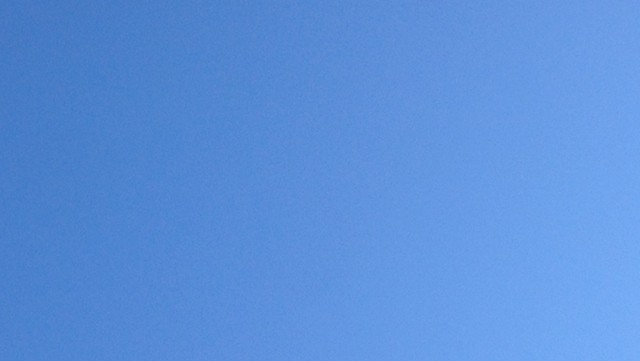
★★★★★
A dark moth had blundered in on the night air. It made its way back across the living room, encouraged by an old newspaper section, and tried to escape into daylight in the little blind glass space where the sliding windows overlapped, a child-safe distance. The strong sideways light was like a drumroll, like a ping-pong volley between two good players who aren’t good enough to finish one another. The sky was clear blue, not a deep and piercing blue yet. By afternoon it had deepened a little. A little chill held on in the warm direct sun. Shadows directly preceded footfalls going uptown. The fountains in Columbus Circle seemed to be going in slow motion. The high parts of the buildings looked newly washed. A glow got into the dim plaza, even under the scaffolding. Now, symmetrically, it was cool shade that prevailed, but with a mildness lingering in it.
